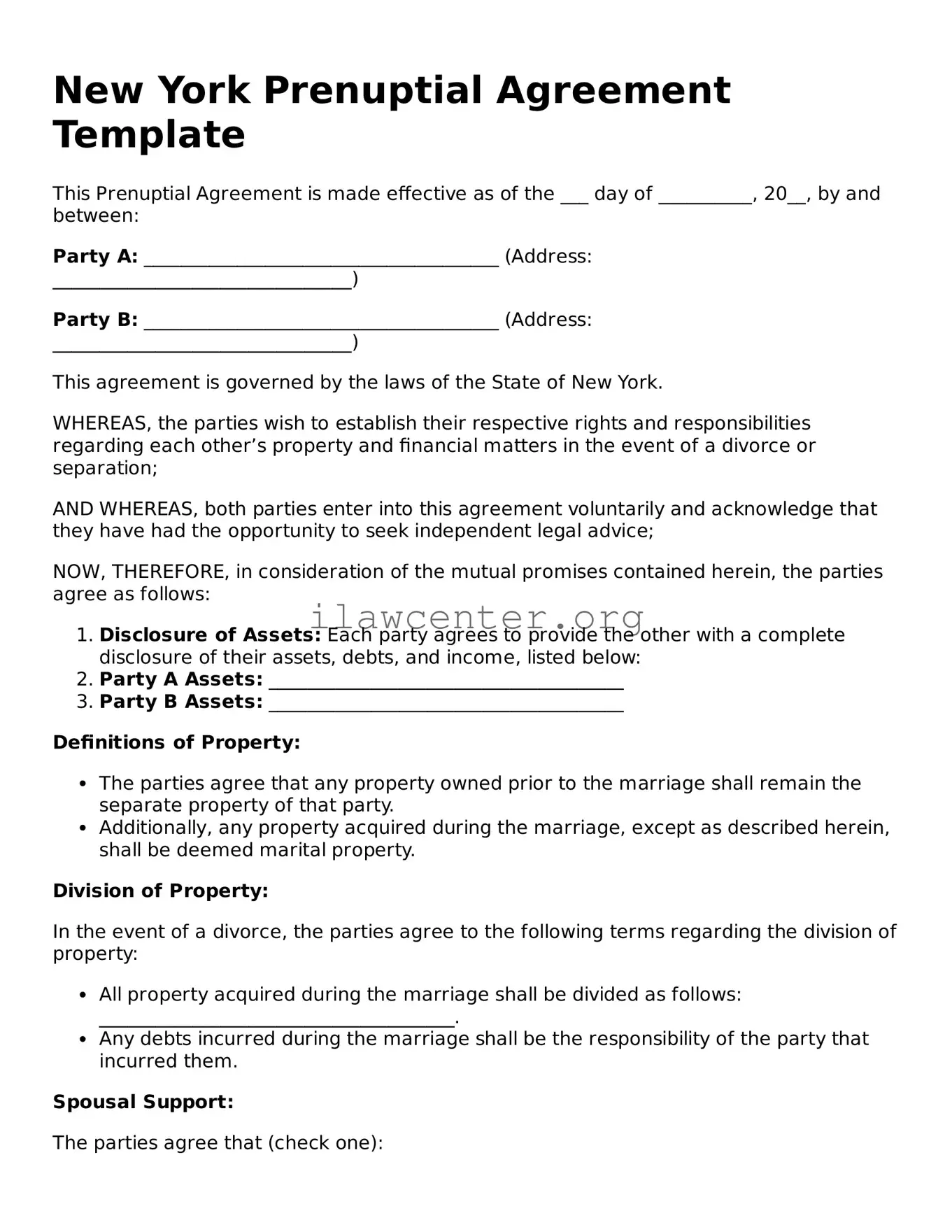Instructions on Utilizing New York Prenuptial Agreement
After obtaining the New York Prenuptial Agreement form, it's crucial to fill it out correctly to ensure that your intentions are documented clearly. Follow these steps carefully to complete the form properly.
- Read the Instructions: Familiarize yourself with all instructions provided with the form to avoid common pitfalls.
- Personal Information: Fill in your full legal names, current addresses, and dates of birth at the designated sections.
- Disclosure of Assets: Clearly outline all assets and debts. This includes bank accounts, real estate, investments, and any other significant property.
- Financial Information: Indicate your current income and any other financial information relevant to your financial situation.
- Terms of Agreement: Write out the terms and conditions you wish to establish for the marriage. Be specific to minimize misunderstandings later.
- Legal Notices: Acknowledge any necessary legal notices included in the form, confirming that both parties have read and understood them.
- Signature Section: Both parties must sign and date the form. Consider having a witness present during this process.
- Notarization: Have the agreement notarized to give it legal weight. This step is crucial for enforcement in court.
- Keep Copies: Make copies for both parties and any legal representation for future reference.
Once you have completed the form, review it for any errors or omissions before proceeding. Properly signed and notarized, your Prenuptial Agreement is now ready for use, ensuring both parties have clarity and understanding moving forward.
